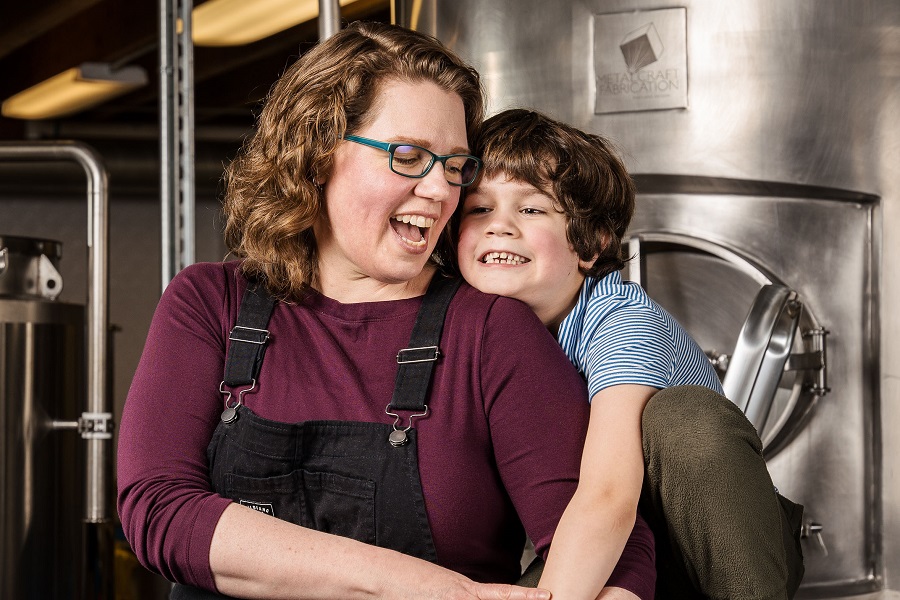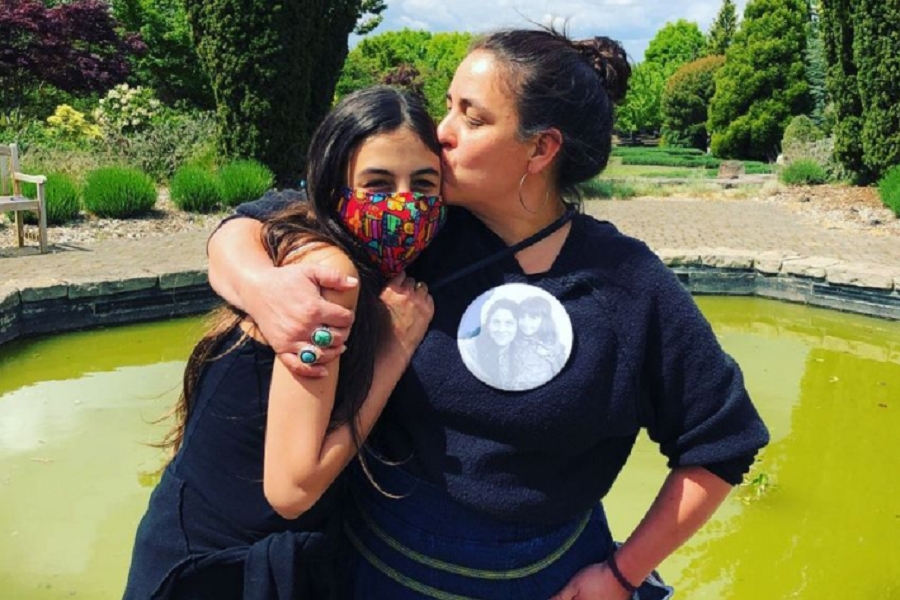Woman-owned businesses have been a lifeline during the post-pandemic recovery. But female business owners say they’re not getting adequate support to continue driving economic growth.
For Nikki Guerrero, founder of Hot Mama Salsa in Portland, the COVID-19 pandemic has meant unprecedented sacrifice.
Guerrero began her food business in 2008, and is used to giving up free time and energy for her company. But when her daughter began sheltering in place at home last year, Guerrero faced the impossible choice of being there for her 12-year-old and running her business.
“My daughter goes to a Waldorf school, and isn’t used to staring at screens all day. She was at home and feeling isolated. The hardest part of the pandemic was having to choose between taking care of my child and running my business,” says Guerrero.
“I feel like I sacrificed a year of my daughter’s life. I still don’t know if I made the right choice.”
Woman-owned businesses have been a major driver of economic growth as the economy recovers — but women who own businesses, particularly those with children, are struggling to find the support they need to continue to work.
The disproportionate effect the pandemic has had on working mothers is well-documented. State economist Josh Lehner did a comprehensive assessment of parents in the labor force in February of this year. The results strongly suggested child care responsibilities played a large role in determining whether or not a woman could return to work.
Nationwide, one million mothers have left the labor force in the past year, double the amount of fathers, according to Lehner’s data. In Oregon, that amounts to approximately 12,000 mothers leaving the labor force.
“What we are seeing is that women who don’t have children are re-entering the workforce at pretty much the same rate as men. But when it comes to people with children, that is where you see the gender gap,” he says.
According to a March reportfrom employment platform Gusto, women-owned businesses make up half of all new businesses started during the pandemic, despite only 39% of businesses being female-led overall, according to the National Association of Women Business Owners.
But child care responsibilities have put strain on women-led businesses. According to the Gusto study, 31% of female business owners had school-age children at home, and 61% said school closures negatively impacted their business. Furthermore, 30% of female business owners had to scale back their operations due to childcare responsibility.
Government support has also fallen short. While all businesses have faced COVID-19 challenges, only 59% of female-led businesses have received PPP loans, compared to 72% of businesses overall.
According to the 2021 Women in the Workplace report by McKinsey & Co, burnout and child care duties mean nearly one in three women are considering changing careers, or giving up their career paths altogether.
But workplace flexibility to accommodate parents is also on the rise, and childcare incentives — such as the Childcare as Infrastructure Act and the Child Care Stabilization Grant — are beginning to come online. If the climate continues to grow more accommodating to working mothers, Oregon could hasten its economic rebound.
If not, the labor market could become even drier than it is currently.
Even before the pandemic hit, the United States’ failure to offer adequate child care was costly. According to a June estimate by education and child care advocacy foundation Council for a Strong America, the U.S. child care crisis costs the nation $57 billion a year in lost earnings, productivity and revenue.
The same McKinsey reportalso found female leaders tend to drive better business outcomes, are more supportive of their teams and are more likely than male leaders to champion diversity, equity and inclusion (DEI) initiatives.
“I believe we need all types of people in the workforce because each of our backgrounds and experience brings something valuable,” says Genevieve Brazelton, CEO of The Bitter Housewife, a cocktail bitters manufacturer.
“I don’t think you can really generalize all mothers — they each bring something specific,” Brazelton says. “On the other hand, every mother I know is really good at figuring out what the most important thing is right now and generally letting everything else go until it becomes the most important thing.”

Genevieve Brazelton and son Dylan. Credit: Jordan Hughes Creative
For Brazelton, the experience of being a mom during COVID-19 has “sucked.” While things have gotten easier for Brazelton now that school has resumed, child care is still an issue. Playdates are more difficult and labor-intensive due to safety precautions, and limited space in afterschool programs meant her son has nothing to do after class.
Brazelton and her husband have tried to divvy up child care responsibilities, but neither are able to get a full day of work in. While online sales have been robust, they have not been enough to get the business back to 2019 levels yet.
“Without government assistance we wouldn’t still have a business,” she says.
Guerrero was not surprised at all by the McKinsey numbers. She and her husband both work outside the home, but as a woman, she felt pressure to give up her business ambitions to step into the caregiver role. She also has felt immense pressure to take care of all her employees.
“Culturally there is a huge amount of pressure put on women to do all things. That’s a cultural standard that is very negative,” says Guerrero. “And as a woman, you inherently hold emotional space for all the people that work for you.”
A June report from SHRM found both men and women wanted more flexibility in their work life, potentially to share family life burdens. 71% of employees, both male and female, said a lack of flexibility is a source of anxiety returning to the workplace.
For employers, offering flexibility in work schedules could help attract workers in this historically small labor market.
Finding child care solutions continues to be a driving factor behind parents’ decision to work. But the pandemic has exposed Oregon’s sizable childcare gap, and politicians are taking notice — both locally and nationally.
Oregon received $224 million from the American Rescue Plan specifically for childcare providers. Child care providers in Oregon can now apply for the Child Care Stabilization Grants through the Department of Education’s Early Learning Division.
Multnomah County’s Preschool For All program, which was approved by voters in 2020 and goes into effect in September 2022, makes early childhood education free for parents of three and four-year-olds.
Another entity helping working parents is Preschool Promise, a statewide program that makes early learning free for any household making less than $53,000 annually. The program began five years ago, but went statewide in 2020 after receiving funding for an expansion.
RELATED STORY: Freeschool
Despite childcare challenges, Nikki Guerrero has done her best keeping her daughter engaged. She even included her in her company’s cooking videos on Hot Mama’s Instagram account, making her a bigger part of the family business.
And business has been good for Hot Mama Salsa. Normally sales die down in the fall, but Guerrero says sales have continued to hold strong so far. Consumers continue to spend more money on groceries than they did pre-pandemic, and Guerrero notes that recent issues with the global supply chain have shown stores the value of consistent local food producers. Online sales have increased 300%.
It has been good for her daughter to be around people, but “getting back into the rhythm” has been hard. Guerrero says working during COVID-19 has made her develop a bad work-life balance. She has no judgment for anyone wanting to take a step back to focus on their families.
“I’m considering it myself. I don’t have the mental and emotional capacity to continue doing what I have been doing.” she says.
“A lot of people have gotten rest and clarity during this time about what they need and want out of life. People need a reprieve from all this trauma.”
To subscribe to Oregon Business, click here.










